Related Research Articles

Volunteer Park is a 48.3-acre (19.5 ha) park in the Capitol Hill neighborhood of Seattle, Washington, United States.

Queen Anne is a neighborhood and geographic feature in Seattle, Washington, United States, located northwest of downtown. Queen Anne covers an area of 7.3 square kilometers (2.8 sq mi), and has a population of about 28,000. It is bordered by Belltown to the south, Lake Union to the east, the Lake Washington Ship Canal to the north and Interbay to the west.

The West Point Light, also known as the Discovery Park Lighthouse, is an active aid to navigation on Seattle, Washington's West Point, which juts into Puget Sound and marks the northern extent of Elliott Bay. The lighthouse is similar in design to the Point No Point Light and was added to the National Register of Historic Places in 1977. It is a main feature of Seattle's Discovery Park.

Cal Anderson Park is a public park on Seattle, Washington's Capitol Hill that includes Lincoln Reservoir and Bobby Morris Playfield.

The Emerald Necklace consists of a 1,100-acre chain of parks linked by parkways and waterways in Boston and Brookline, Massachusetts. It was designed by landscape architect Frederick Law Olmsted, and gets its name from the way the planned chain appears to hang from the "neck" of the Boston peninsula. In 1989, the Emerald Necklace was designated as a Boston Landmark by the Boston Landmarks Commission.

The Olmsted Brothers company was a landscape architectural firm in the United States, established in 1898 by brothers John Charles Olmsted (1852–1920) and Frederick Law Olmsted Jr. (1870–1957), sons of the landscape architect Frederick Law Olmsted.

Frederick Law Olmsted National Historic Site is a United States National Historic Site located in Brookline, Massachusetts, a suburb of Boston. Frederick Law Olmsted (1822–1903) is recognized as the founder of American landscape architecture and the nation's foremost parkmaker of the 19th century. In 1883, Olmsted moved his home to suburban Boston and established "Fairsted", the world's first full-scale professional office for the practice of landscape design. Over the course of the next century, his sons and successors expanded and perpetuated Olmsted's design ideals, philosophy, and influence.

Ravenna Park and Cowen Park comprise a single contiguous recreation and green space in the Ravenna neighborhood of Seattle, Washington in the United States. These public parks encompass the ravine with a maximum depth of 115 feet (35 m) through which Ravenna Creek flows.

John Charles Olmsted was an American landscape architect. The nephew and adopted son of Frederick Law Olmsted, he worked with his father and his younger brother, Frederick Law Olmsted Jr., in their father's firm. After their father retired, the brothers took over leadership and founded Olmsted Brothers as a landscape design firm. The firm became well known for designing many urban parks, college campuses, and other public places. John Olmsted's body of work from over 40 years as a landscape architect has left its mark on the American urban landscape.

Washington Park is a 372-acre (1.5 km2) park between Cottage Grove Avenue and Martin Luther King Drive, located at 5531 S. Martin Luther King Dr. in the Washington Park community area on the South Side of Chicago. It was named for President George Washington in 1880. Washington Park is the largest of four Chicago Park District parks named after persons surnamed Washington. Located in the park is the DuSable Museum of African American History. This park was the proposed site of the Olympic Stadium and the Olympic swimming venue for Chicago's bid to host the 2016 Summer Olympics. Washington Park was added to the National Register of Historic Places on August 20, 2004.

Mount Tabor is an extinct volcanic vent with a city park on the volcano, located in Portland, Oregon's neighborhood of the same name. The name refers to Mount Tabor, Israel. It was named by Plympton Kelly, son of Oregon City pioneer resident Clinton Kelly.
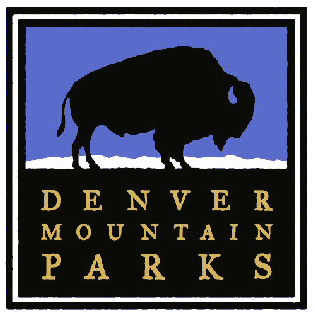
The Denver Mountain Parks system contains more than 14,000 acres (5,700 ha) of parklands in the mountains and foothills of Jefferson, Clear Creek, Douglas, and Grand counties in Colorado, west and south of Denver.
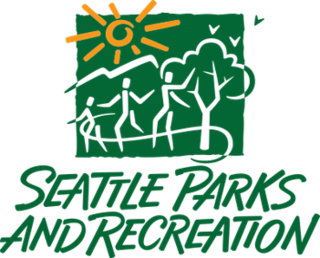
Seattle Parks and Recreation is the government department responsible for maintaining the parks, open spaces, and community centers of the city of Seattle, Washington. The department maintains properties covering an area of over 6,200 acres (25 km2), which is equivalent to roughly 11% of the city's total area. Of those 6,200 acres (25 km2), 4,600 acres (19 km2) are developed.

The Rainier Club is a private club in Seattle, Washington; it has been referred to as "Seattle's preeminent private club." Its clubhouse building, completed in 1904, is listed on the National Register of Historic Places. It was founded in 1888 in what was then the Washington Territory. As of 2008, the club has 1,300 members.
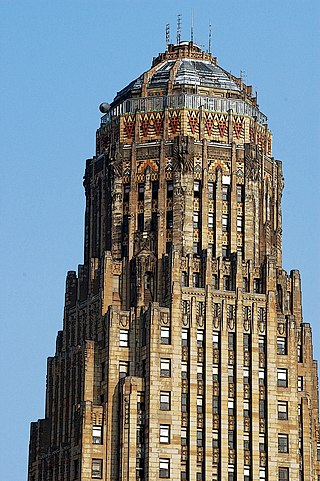
The Architecture of Buffalo, New York, particularly the buildings constructed between the American Civil War and the Great Depression, is said to have created a new, distinctly American form of architecture and to have influenced design throughout the world.
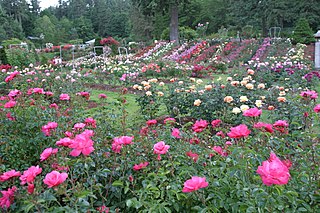
The plan for a park system in Portland, Oregon, produced by the Olmsted Brothers landscape architecture firm in 1903 served as the model for much of the young U.S. city's development, including neighborhood and regional parks, scenic boulevards, and pedestrian pathways. The Olmsteds were retained by the city's new Park Board, under the guidance of board member Thomas Lamb Eliot. The comprehensive plan was typical of the City Beautiful movement, and was brought to Portland during the run-up to the 1905 Lewis and Clark Centennial Exposition. The report was published as an appendix to the Park Board's annual report on December 31, 1903.
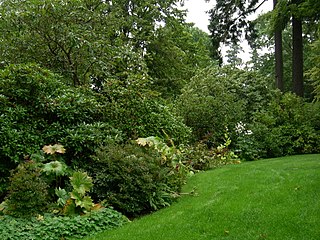
Dunn Gardens in Seattle, Washington, is a privately owned 7.5-acre (3.0 ha) property composed of the remaining acreage of the estate of Arthur G. Dunn Sr., who bought the property in 1914 as a summer get-a-way for his family, and contracted the landscaping to the Olmsted Brothers. Upon his death, the property was inherited by his children. His son Edward B. Dunn provided for the care of his share of the estate in his will. A trust was created two years after his death to oversee the entire property. Dunn Gardens were listed on the National Register of Historic Places on December 15, 1994, and is open for special public events and docent-led guided tours April through July, and from September through October.

The Montlake Historic District is a part of Montlake, located northeast of the downtown district in Seattle, Washington that has been listed on the National Register of Historic Places since October 15, 2015. It primarily contains residential property. However, there are some other types of buildings within the district such as the Northwest Fisheries Science Center of the National Marine Fisheries Service and the Seattle Yacht Club.
Mount Baker Park is a 21.7-acre (8.8 ha) urban park in Seattle, Washington, United States. It is located along a ravine in the Mount Baker neighborhood in the Rainier Valley, stretching from South McClellan Street in the south to Lake Washington Boulevard at its north end. The park's north end is adjacent to Mount Baker Beach on Lake Washington and Colman Park. The south end connects to Mount Baker Boulevard, a scenic street that continues southwest to Franklin High School and the Mount Baker light rail station.
References
- 1 2 3 Park History - Olmsted Parks, City of Seattle Parks and Recreation, retrieved 2012-01-12
- ↑ HistoryLink and Friends of Olmsted Parks (September 29, 2004), "Olmsted Park Plans for Seattle Cybertour", HistoryLink , Seattle: History Ink
- ↑ Botanic Gardens: History, University of Washington, archived from the original on 2010-09-21, retrieved 2011-01-12
- ↑ Kathy Mulady (April 1, 2003), City celebrates park pioneer Olmsted, Seattle Post-Intelligencer, retrieved 2012-01-12
- ↑ "National Register of Historic Places Multiple Property Documentation Form: Seattle's Olmsted Parks and Boulevards (1903–68)" (PDF). National Park Service. December 15, 2016. Retrieved August 7, 2020– via Washington State Department of Archaeology and Historic Preservation.